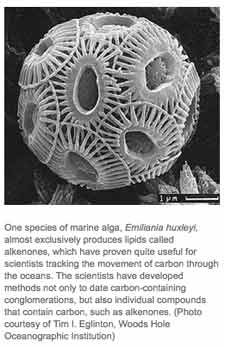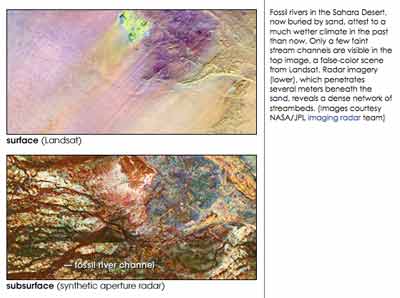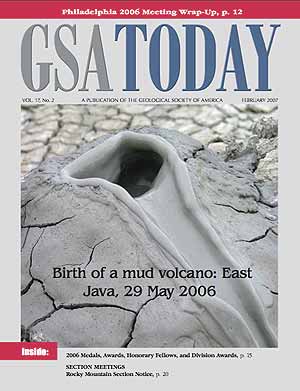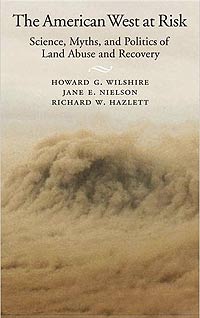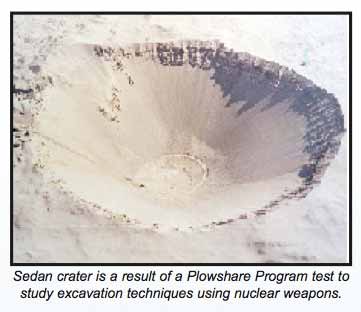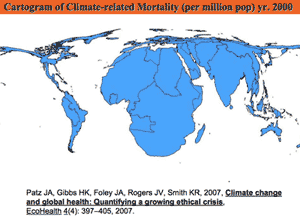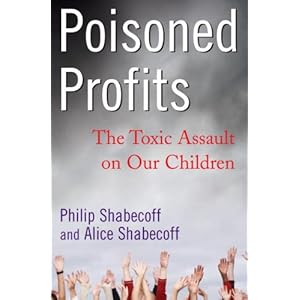

Summary. In the month leading up to a baby's birth, the umbilical cord pulses with the equivalent of at least 300 quarts of blood each day, pumped back and forth from the nutrient- and oxygen-rich placenta to the rapidly growing child cradled in a sac of amniotic fluid. This cord is a lifeline between mother and baby, bearing nutrients that sustain life and propel growth.
Not long ago scientists thought that the placenta shielded cord blood — and the developing baby — from most chemicals and pollutants in the environment. But now we know that at this critical time when organs, vessels, membranes and systems are knit together from single cells to finished form in a span of weeks, the umbilical cord carries not only the building blocks of life, but also a steady stream of industrial chemicals, pollutants and pesticides that cross the placenta as readily as residues from cigarettes and alcohol. This is the human "body burden" — the pollution in people that permeates everyone in the world, including babies in the womb.
In a study spearheaded by the Environmental Working Group (EWG)S in collaboration with Commonweal, researchers at two major laboratories found an average of 200 industrial chemicals and pollutants in umbilical cord blood from 10 babies born in August and September of 2004 in U.S. hospitals. Tests revealed a total of 287 chemicals in the group. The umbilical cord blood of these 10 children, collected by Red Cross after the cord was cut, harbored pesticides, consumer product ingredients, and wastes from burning coal, gasoline, and garbage.

This study represents the first reported cord blood tests for 261 of the targeted chemicals and the first reported detections in cord blood for 209 compounds. Among them are eight perfluorochemicals used as stain and oil repellants in fast food packaging, clothes and textiles — including the Teflon chemical PFOA, recently characterized as a likely human carcinogen by the EPA's Science Advisory Board — dozens of widely used brominated flame retardants and their toxic by-products; and numerous pesticides.
Of the 287 chemicals we detected in umbilical cord blood, we know that 180 cause cancer in humans or animals, 217 are toxic to the brain and nervous system, and 208 cause birth defects or abnormal development in animal tests. The dangers of pre- or post-natal exposure to this complex mixture of carcinogens, developmental toxins and neurotoxins have never been studied.
Chemicals and pollutants detected in human umbilical cord blood
 |
Mercury (Hg) - tested for 1, found 1
Pollutant from coal-fired power plants, mercury-containing products, and certain industrial processes. Accumulates in seafood. Harms brain development and function. |
 |
Polyaromatic hydrocarbons (PAHs) - tested for 18, found 9
Pollutants from burning gasoline and garbage. Linked to cancer. Accumulates in food chain. |
 |
Polybrominated dibenzodioxins and furans (PBDD/F) - tested for 12, found 7
Contaminants in brominated flame retardants. Pollutants and byproducts from plastic production and incineration. Accumulate in food chain. Toxic to developing endocrine (hormone) system |
 |
Perfluorinated chemicals (PFCs) - tested for 12, found 9
Active ingredients or breakdown products of Teflon, Scotchgard, fabric and carpet protectors, food wrap coatings. Global contaminants. Accumulate in the environment and the food chain. Linked to cancer, birth defects, and more. |
 |
Polychlorinated dibenzodioxins and furans (PCDD/F) - tested for 17, found 11
Pollutants, by-products of PVC production, industrial bleaching, and incineration. Cause cancer in humans. Persist for decades in the environment. Very toxic to developing endocrine (hormone) system. |
 |
Organochlorine pesticides (OCs) - tested for 28, found 21
DDT, chlordane and other pesticides. Largely banned in the U.S. Persist for decades in the environment. Accumulate up the food chain, to man. Cause cancer and numerous reproductive effects. |
 |
Polybrominated diphenyl ethers (PBDEs) - tested for 46, found 32
Flame retardant in furniture foam, computers, and televisions. Accumulates in the food chain and human tissues. Adversely affects brain development and the thyroid. |
 |
Polychlorinated Naphthalenes (PCNs) - tested for 70, found 50
Wood preservatives, varnishes, machine lubricating oils, waste incineration. Common PCB contaminant. Contaminate the food chain. Cause liver and kidney damage. |
 |
Polychlorinated biphenyls (PCBs) - tested for 209, found 147
Industrial insulators and lubricants. Banned in the U.S. in 1976. Persist for decades in the environment. Accumulate up the food chain, to man. Cause cancer and nervous system problems. |
Source: Chemical analyses of 10 umbilical cord blood samples were conducted by AXYS Analytical Services (Sydney, BC) and Flett Research Ltd. (Winnipeg, MB).
Chemical exposures in the womb or during infancy can be dramatically more harmful than exposures later in life. Substantial scientific evidence demonstrates that children face amplified risks from their body burden of pollution; the findings are particularly strong for many of the chemicals found in this study, including mercury, PCBs and dioxins. Children's vulnerability derives from both rapid development and incomplete defense systems:
-
A developing child's chemical exposures are greater pound-for-pound than those of adults.
-
An immature, porous blood-brain barrier allows greater chemical exposures to the developing brain.
-
Children have lower levels of some chemical-binding proteins, allowing more of a chemical to reach "target organs."
-
A baby's organs and systems are rapidly developing, and thus are often more vulnerable to damage from chemical exposure.
-
Systems that detoxify and excrete industrial chemicals are not fully developed.
-
The longer future life span of a child compared to an adult allows more time for adverse effects to arise.
The 10 children in this study were chosen randomly, from among 2004's summer season of live births from mothers in Red Cross' volunteer, national cord blood collection program. They were not chosen because their parents work in the chemical industry or because they were known to bear problems from chemical exposures in the womb. Nevertheless, each baby was born polluted with a broad array of contaminants.
U.S. industries manufacture and import approximately 75,000 chemicals, 3,000 of them at over a million pounds per year. Health officials do not know how many of these chemicals pollute fetal blood and what the health consequences of in utero exposures may be.
Had we tested for a broader array of chemicals, we would almost certainly have detected far more than 287. But testing umbilical cord blood for industrial chemicals is technically challenging. Chemical manufacturers are not required to divulge to the public or government health officials methods to detect their chemicals in humans. Few labs are equipped with the machines and expertise to run the tests or the funding to develop the methods. Laboratories have yet to develop methods to test human tissues for the vast majority of chemicals on the market, and the few tests that labs are able to conduct are expensive. Laboratory costs for the cord blood analyses reported here were $10,000 per sample.
A developing baby depends on adults for protection, nutrition, and, ultimately, survival. As a society we have a responsibility to ensure that babies do not enter this world pre-polluted, with 200 industrial chemicals in their blood. Decades-old bans on a handful of chemicals like PCBs, lead gas additives, DDT and other pesticides have led to significant declines in people's blood levels of these pollutants. But good news like this is hard to find for other chemicals.
The Toxic Substances Control Act, the 1976 federal law meant to ensure the safety of commercial chemicals, essentially deemed 63,000 existing chemicals "safe as used" the day the law was passed, through mandated, en masse approval for use with no safety scrutiny. It forces the government to approve new chemicals within 90 days of a company's application at an average pace of seven per day. It has not been improved for nearly 30 years — longer than any other major environmental or public health statute — and does nothing to reduce or ensure the safety of exposure to pollution in the womb.
Because the Toxic Substances Control Act fails to mandate safety studies, the government has initiated a number of voluntary programs to gather more information about chemicals, most notably the high production volume (HPV) chemical screening program. But these efforts have been largely ineffective at reducing human exposures to chemicals. They are no substitute for a clear statutory requirement to protect children from the toxic effects of chemical exposure.
In light of the findings in this study and a substantial body of supporting science on the toxicity of early life exposures to industrial chemicals, we strongly urge that federal laws and policies be reformed to ensure that children are protected from chemicals, and that to the maximum extent possible, exposures to industrial chemicals before birth be eliminated. The sooner society takes action, the sooner we can reduce or end pollution in the womb.
See: World-Renowned Scientist Dr. Theo Colborn on the Health Effects of Water Contamination from Fracking
See: Our Stolen Future: Are We Threatening Our Fertility, Intelligence, and Survival?--A Scientific Detective Story
See: Fracking: Implications for Human and Environmental Health










